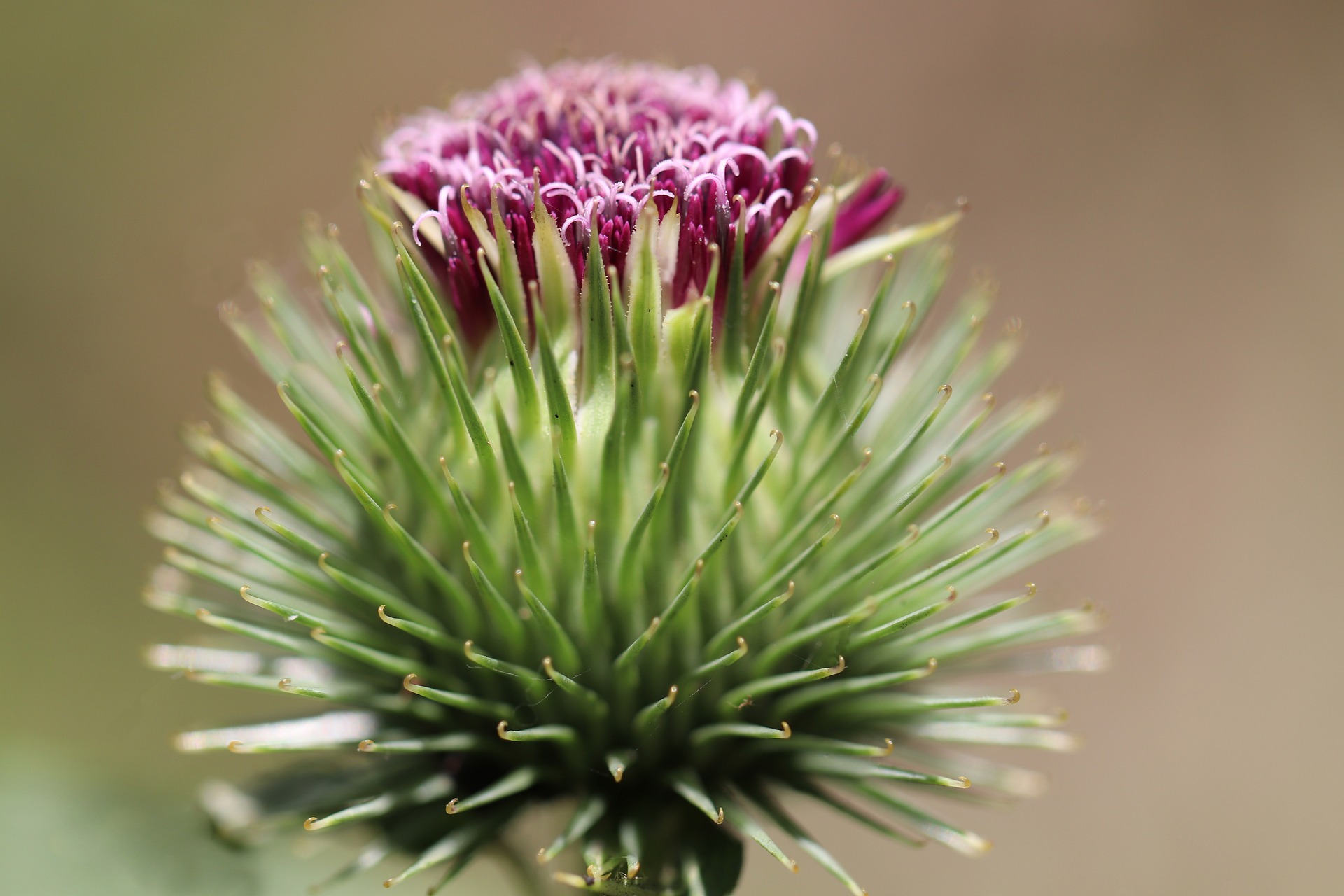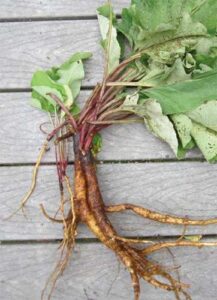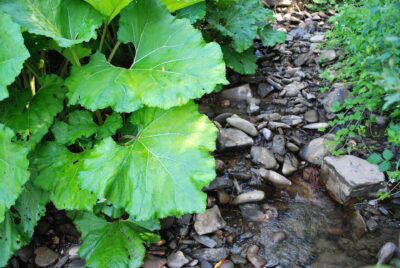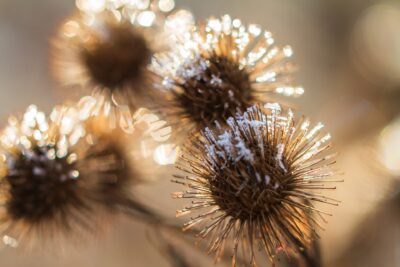Burdock Root Improves Digestion and Detoxifies

Burdock (Arctium lappa) is prized for the medicinal properties of its root. Burdock root improves digestion and detoxifies. NutraCleanse is a blend of Burdock root and other herbs that eliminate the toxins that impair digestive function. NutraCleanse tea encourages bowel movement and excretion of waste, and regulates healthy digestive enzymes within the gut. Healing compounds such as inulin, chlorogenic acid, and mucilage make Burdock root a multifaceted support for eliminating waste and inflammation in the body.
Burdock root contains:
- Inulin
- Chlorogenic acid
- Mucilage
- Sulfurous acetylene compounds
- Polyacetylenes
- Bitter guaianolide-type constituents
Burdock Root Improves Digestion
Herbalists call Burdock root an alterative tonic; drinking it regularly helps the body carry out its normal functions – metabolism, storing and using food – more effectively. Burdock root supports the liver, the organ responsible for producing bile for digestion and storing nutrients. One of Burdock’s most important healing compounds is inulin, a long-chain polysaccharide that benefits us as a prebiotic fiber. We can’t digest inulin, so it reaches the large intestine intact, and is digested in the colon by healthy bacteria, Bifidobacteria and Lactobacilli. Nourishing these healthy bacteria crowds out potentially disease-causing bacteria and improves overall digestive function. Healthy intestinal flora leads to a healthy colon, healthy skin, and better overall wellbeing. Burdock’s mucilage improves bowel regularity, protects the gut from irritation, and reduces inflammation caused by food intolerances. NutraCleanse tea supports digestion and nourishes the microbiome over time, steadily improving overall wellbeing.
Burdock Root Detoxifies
Alterative tonics like Burdock root are said to “clean the blood” by supporting the body’s natural detoxification processes. Through the small intestine and enteric nerves of the gut, Burdock root stimulates the lymphatic system, which carries infection-fighting white blood cells throughout the body. Its chlorogenic acid content increases the functioning of the liver, the organ responsible for filtering out toxins, removing bacteria and old red blood cells from the blood, and producing immune factors. Burdock root stimulates sweating, supporting elimination of harmful toxins. It stimulates more frequent urination, which eliminates excess water and flushes out toxins and waste. NutraCleanse tea is a blend that safely bolsters the body’s natural waste removal channels.
Burdock Roots Helps Prevent Chronic Diseases
Chlorogenic acid is an antioxidant compound in Burdock root that reduces inflammation and oxidative stress. Inflammation is linked to many chronic diseases. Chlorogenic acid may lower blood pressure by increasing the elasticity of the cardiovascular system, reducing the risk of heart disease. Burdock root’s inulin helps modulate post-meal blood glucose and insulin levels. This helps maintain healthy blood sugar levels, helping reduce the risk of and manage obesity and diabetes mellitus.
More About Burdock
Although people usually use the root of Burdock, all its parts have medicinal value. The root makes an excellent tea dried and rehydrated, or fresh. Burdock is a member of the Asteraceae family. Its genus, Arctium, derives from arktos, which means bear in Greek. This refers to its bristly burs, which resemble bear fur. The species name, lappa, is Latin for bur, or thorn. Burdock’s burs have hooked tips that attach to fur and clothing, dispersing the plant’s seeds far and wide on animals and hikers. The small, sticky hooks of Burdock burs inspired the inventor of Velcro.
Burdock is biennial, meaning it lives for two years. In its first year, it grows close to the ground with large basal fronds, gathering energy in its long, main taproot, which looks like a carrot. The root is dark brown, with a white or light brown interior. The basal leaves die in the winter. Then, a tall stem shoots up and branches out from the taproot the following Spring. It blooms in the Spring or Summer of the second year with pink or purple flowers on spiny burs.



